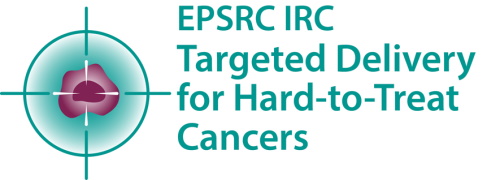
Submitted by L. Millard on Thu, 22/09/2022 - 14:06
Research Associate at the School of Chemistry, University of Glasgow, and member of the IRC team, Dr Arvin Eskandari, presented a talk about his current research into the drug delivery potential of metal organic frameworks (MOFs) for cancer therapy at the annual meeting of the Royal Society of Chemistry's Porous Materials Interest Group, held at the Technology and Innovation Centre, Glasgow.
The talk, titled ‘Ultrasmall curcumin nanoparticles loaded UiO66/Zr metal organic framework (MOFs) to target pancreatic cancers’, brought focus to the potential for MOFs as promising materials for the controlled delivery of molecules in nanoscale due to their high drug capacities, ease of functionality, and tunable physical properties.
There is an urgent need for new therapeutics to treat pancreatic cancer due to its current late diagnosis, limited treatment success and extremely poor prognosis1. Five-year survival rate of pancreatic cancer is less than 9% and it is expected to become the second leading cause of cancer-related death by 20302.
The next step for this research is to further comprehend physiochemical properties of the formulation and try to enhance its cytotoxicity effect by coating with different macromolecules to improve bio dispersibility and the cell internalisation. Dr Arvin Eskandari, Research Associate at the School of Chemistry, University of Glasgow
Dr Eskandari set out the challenge: “The hydrophilicity of standard anti-pancreatic cancer agents such as gemcitabine has hindered the efficacy. The reduced efficacy is due to not enough drug at target environment as well as off-target toxicity. Hydrophobic drugs are preferable as they can enter the cell more readily, however the more hydrophobic drug used, the lower potential of administration would be."
Dr Eskandari explained that curcumin, a natural diphenolic compound, is known to inhibit the growth of various cancer cells, including pancreatic cancer (PC)3. However, despite its known efficacy, poor solubility and low bioavailability limit the therapeutic use of curcumin. This has turned the attention of researchers to the potential of nanosized drug delivery systems as a promising platform to circumvent the limitations of mono-chemotherapy, enhance solubility and increase stability of drug formulation.
The talk described the highly supramolecular structure of MOFs that comes from organic ‘linkers’ and inorganic ‘nodes’ and Dr Eskandari reported his work featuring “the in-situ formation of ultrasmall curcumin nanoparticles (10nm) loaded onto UiO-66/Zr MOFs (Figure 1) via solvothermal method”. The physical characteristics of the MOFs showed that the formation of ultrasmall curcumin nanoparticles reduced the surface area of the material, indicating that ultrasmall particles could close the pores and change the surface features of highly porous Zr-MOFs.
These structural changes were also shown to have altered the surface potential of the MOF, making it more favourable for drug delivery purposes. All these changes have been achieved in a single step “one-pot synthesis” which can save time, energy, and materials while the ability of formulation to eliminate cancer cells remains almost unchanged. The researchers then tested the MOFs formulation on pancreatic cancer cell lines and healthy cells in vitro. Treatment of non-cancerous cells by payload (curcumin) showed significant higher toxicity (up to 200-fold) compared to Zr-MOF formulation, indicating that MOF coated with ultrasmall nanoparticles are promising candidates for further biological assessments.
This study of clinically relevant 3D cell spheroid models show that the nanostructure formulation is able to inhibit the formation of PC spheroids, and mechanistic studies show that MOF-loaded by ultrasmall curcumin nanoparticle prompts PC cell death.
Dr Eskandari said: “The next step for this research is to further comprehend physiochemical properties of the formulation and try to enhance its cytotoxicity effect by coating with different macromolecules to improve bio dispersibility and the cell internalisation.”
References
[1] X. Chen, H.J. Zeh, R. Kang, G. Kroemer, D. Tang, Nat. Rev. Gastroenterol Hepatol. 18, 804, 2021
[2] X. Huang, L. Ding, X. Liu, R. Tong, J. Ding, Z. Qiand, L. Cai, P. Zhang, D. Li, Biomaterials, 270, 120680, 2021
[3] R.S. Prabhuraj, A. Mal, S. K. Valvi, R. Srivastava, A. De, R. Bandyopadhyaya, ACS Appl. Bio Mater., 7, 4643, 2020


